The Importance of Diversity and Inclusivity in the Beauty Industry
If you’re a thin, white, cis, straight woman, chances are you’ve never thought twice about who is in beauty product advertisements. But, if you don’t check off all those boxes, you may have noticed the people in those ads don’t necessarily look like you. That can be disheartening, like being told those products aren’t for you.
On the flip side, if you run a beauty business, you may wonder why sales have been falling over the last few years, not realizing your products and ads appeal only to that narrow target audience.
Representation matters. It can make consumers feel included and as if a business invites them in. For beauty brands, figuring out a truly ideal target audience in line with your values is both ethically and financially responsible.
This guide explores the changes in beauty norms, why diversity and inclusivity matter, diversity-focused brands, and what businesses and consumers can do to promote a more inclusive beauty industry.
How Have Beauty Norms Changed?
When you were in school, chances are you looked at portraits and photos of people from times gone by in your history textbooks. You may have noticed that, even just a few years ago, clothing, hair, and makeup looked very different from today.
Not long ago, members of the BIPOC community were expected to shed their cultures, natural hair, and even skin colors as much as possible to blend in. LGBTQ+ people had to hide anything that could hint at their true identities. People, particularly women, thought they had to hide their bodies if they were “fat” or pregnant, and crash dieting and the use of dangerous drugs to lose weight were expected to achieve a perfect figure.
However, the beauty industry has slowly evolved, with a few major movements helping push things along. While it’s easy to see the differences between fashion in the 1500s and 1900s, it may be harder to see what pushed things along within just a decade or two.
If we look at the last century or so, just a few of the major movements in the beauty industry have been:
- Flapper Movement: Though largely invented by white women, this 1920s movement was a huge evolution to level the playing field between men and women. This more androgynous style crossed boundaries between the genders.
- LGBTQ+ “Signaling”: Since at least the late 1800s, members of the LGBTQ+ community have used fashion to let others in the community know of their identities without being overt. For instance, women wearing pants in the 1920s and dressing in androgynous outfits in the 1970s were often lesbians. Men of the 1980s used right ear piercings to indicate they were gay. Even today, subtle signals in hairstyles and nails remain. Cis, straight people often adopt these fashions, showing the influence the LGBTQ+ community has on everyone else.
- “Plus Size” Recognized: “Plus-sized” was coined in the late 1920s by Lane Bryant and became more used in the 1940s. The term remains understandably controversial, but the very recognition of women of all sizes needing fashionable clothing was revolutionary.
- Black is Beautiful Movement: From the 1950s to the 1970s, activists began encouraging Black people to embrace their natural beauty and cultures through their appearances.
- Men’s Cosmetics Movement: Particularly in the latter half of the 2010s onward, men’s makeup began to grow in popularity. Though this largely applied to cis, straight men at the time, it made people of all genders feel more comfortable creating their looks in a still-patriarchal world.
The beauty industry changes in baby steps and giant leaps all the time. But it’s also cyclical. Gen X-ers and boomers may have chuckled at millennials wearing their high school clothes in the 90s. Now, millennials are doing the same to Gen Z-ers in the early 2020s!
All that said, the beauty industry lags. Most ads and products are still Euro-centric, catering primarily to a white audience. Cis women are still the target, and those with larger bodies are often absent from ads. LGBTQ+ people aren’t featured in marketing campaigns nearly enough, either.
And the main “purpose” of makeup, hair, and skin care products still seems to be “you aren’t good enough as you are. We can make you better.”
While there isn’t anything wrong with enjoying makeup and hair products, no one should be made to feel like they need them to be valuable.
Why Diversity and Inclusivity in Beauty Matters
Everyone knows what it feels like to be left out. Perhaps you were picked last for kickball or found out via social media your friends were all hanging out without you. It hurt, right?
Now, take that feeling and imagine you have it every time you look at a magazine, TV show, makeup aisle, or clothing store.
For many BIPOC, LGBTQ+, and curvy people, this is their norm. Every day is a social media photo with people who have decided to hang out without them or another opportunity to get picked last for something they enjoy.
Worse, imagine walking into a store and seeing products for your skin or hair locked up while similar products for other people are just sitting out. This often happens with natural hair care and specialized skin care products for Black people, implying they’ll steal their products while white people won’t.
Beauty Inclusivity and Diversity: Essential Statistics
Let’s look at some fast facts regarding inclusivity in the beauty industry.
- 68% of Americans want diversity in beauty ads
- 73% believe the current beauty industry manipulates women using insecurities
- 52% believe affordability and inclusivity go hand-in-hand
- 72% of Americans think the definition of beauty is too strict
- 40% of Gen Z-ers think diversity and inclusion are the most important beauty brand values
- 31% of millennials feel the same
- 75% more money is spent by Asian Americans on beauty products annually than by the general U.S. population
- 15%: How much shelf space Sephora, Macy’s, Bluemercury, and others have committed to dedicating to Black-owned businesses
- $1.3 Trillion: How much buying power Black consumers have
- $2.5 Billion: The buying market for the Black haircare industry
- Nearly 40% of people aged 18 to 22 are interested in gender-neutral beauty products
- 56% of men admit to using facial cosmetics on occasion
- 59% of Gen Z-ers believe gender is a spectrum
- >12% of American Millennials are transgender or gender non-conforming
- $1 Trillion: Approximately how much disposable income in the U.S. the LGBTQ+ community holds
- 60% of the LGBTQ+ community changes their hair when they come out
- About 1/3 of businesses have a clear and implemented diversity and inclusion plan
- 68% of women are considered “plus-size”
- 21% of adults who use relevant products go out of their way to buy diversity-promoting beauty products
- 20% of people have paid more for a beauty product from an inclusive company
Sources: Mintel; Statista; Nielsen IQ; CBInsights; CNBC; Vogue Business; Glamour; Beauty Packaging
Of course, these aren’t the only important statistics out there! We recommend doing a deep dive when considering changing your products, marketing tactics, or buying choices.
Note:
Though we aren’t covering this exact topic, it’s important to note that companies embracing diversity initiatives shouldn’t forget about disabilities. According to Beauty Packaging, 19% of beauty consumers think mobility-friendly packaging indicates a business is inclusive. Further, 57% believe beauty product packaging should be more accessible for those with mobility-related disabilities.
Beauty Brands Committed to Inclusivity
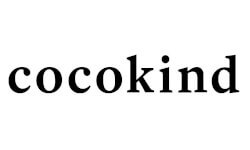
Priscilla Tsai, founder and CEO of cocokind, wants to “break the cycle of ‘aspirational beauty.'” Essentially, the company wants all customers to know they are enough as they are, and these products are simply here to help keep their skin healthy. The company is fully transparent about all ingredients in its products, too.
What Sets Cocokind Apart?
Cocokind is a woman- and minority-owned business featuring people of different genders, races, and ages on its Instagram page. The company also uses its platform to speak out against hate.
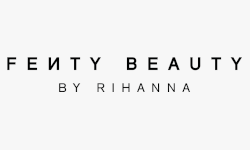
Fenty Beauty and Fenty Skin result from singer Rihanna’s struggle to find skin care products that work for any skin color or type. The company now has 50+ makeup shades formulated to be safe for all skin types and skin care products to promote health.
What Sets Fenty Beauty Apart?
Though Fenty isn’t the first makeup line to focus on different skin tones, it’s the one that brought the issue to the forefront. Many other beauty companies have taken up the call since.
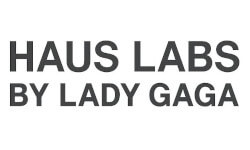
Haus Labs focuses on science and inclusivity, fighting for makeup free of potentially dangerous ingredients and equality in the beauty industry. Lady Gaga, one of the company’s owners, is often featured in images. But she’s rarely alone, surrounding herself with people of all races, ages, genders, and skin types. Haus Labs even features models with tons of freckles, which is incredibly rare for beauty companies!
What Sets Haus Labs Apart?
This company is associated with the Born This Way Foundation and donates $1 of every sale to help young people with mental health issues. Additionally, Haus Labs’ first-ever campaign featured LGBTQ+ and Black models, breaking barriers by focusing on those target audiences rather than cis, straight, and white people.

MAC Cosmetics has a mantra of “All Ages, All Races, All Genders” and champions BIPOC and LGBTQ+ causes through products and advocacy. Mac Cosmetics’ models reflect the company’s commitment to inclusivity.
What Sets MAC Cosmetics Apart?
MAC Cosmetics opened in the mid-1980s and has always been committed to inclusivity, making it one of the first major companies to do so.
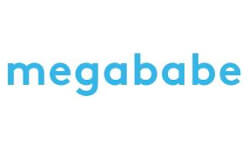
Megababe was founded by influencer Katie Sturino, a proponent of loving your body regardless of size. She realized she couldn’t find fabulous products to address issues many women face—thigh rub, boob sweat, and B.O. She introduces herself by admitting to having these everyday “problems” and says her company makes “clean, cute body care products that really work to keep you comfy.”
What Sets Megababe Apart?
Megababe was created with women of all sizes in mind—something people don’t often consider when thinking of cosmetics and skincare products. It directly takes on problems most women face, but beauty companies often shy away from it because they’re “not pretty.”
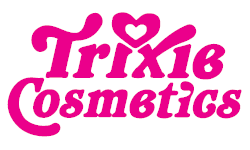
Drag icon Trixie Mattel founded Trixie Cosmetics, which goes the opposite direction of some of the others on our list. Instead of focusing on how someone looks naturally, it lets people play with colors. The goal is to provide “makeup that will make everyone feel like a legend, icon, and star.” Plus, a portion of every sale goes to The Bee Conservancy.
What Sets Trixie Cosmetics Apart?
In addition to giving people permission to have fun with makeup rather than feeling the need to look any particular way, Trixie Cosmetics runs a YouTube channel with tons of content, including tutorials.
Bonus Retailer: ModCloth
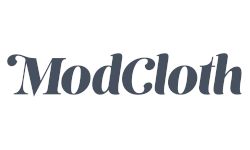
ModCloth is an inclusive clothing brand, not a makeup or product brand. But, they deserve an honorable mention because they broke the mold by signing the Truth in Advertising pledge supporting the Truth in Advertising Act. This Act aimed to lower the use of altered bodies and faces in advertising.
The Act is sitting dormant, but ModCloth was the first—and only—retailer to sign the pledge.
Bonus Influencer: Jonathan Van Ness
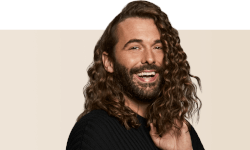
Jonathan Van Ness is an individual known for Queer Eye, the podcast and Netflix show Getting Curious, and, most importantly, being very loud about how everyone is beautiful. If you watch an episode of Queer Eye or spend a little time on Instagram, you’ll undoubtedly see Jonathan cheering every single person on and helping them see their natural beauty.
Additionally, Jonathan runs JVN, a sustainable and cruelty-free line of haircare products with a commitment to being non-gendered and usable for all hair types.
How Beauty Brands Can Make an Inclusive Difference
All the above brands share a few essential features: they’re authentic, consistent, transparent, and loud.
Actions speak louder than words (and fancy ad campaigns) when it comes to inclusive beauty. Consumers can smell performative actions a mile away. This is why there are so many memes about how companies suddenly have rainbow logos in June only, for instance. Those logos disappear on July 1, packed away until the following June—and consumers notice.
How do you walk the walk, though?
1. Be Authentic
88% of consumers crave authenticity and expect it from their favorite brands. So, business owners should figure out what they value and incorporate that into their companies.
2. Be Consistent
Brands that are consistent in their messaging average a 33% increase in revenue. While you can absolutely pump up the Pride in June, for example, you should still have that messaging all year round and across all your media.
3. Be Transparent
66% of buyers think brands need to be transparent. This desire for transparency means sharing (not advertising!) what you do to back up your values, answering questions, and admitting to mistakes. If you run studies, allow access to the raw data, too.
4. Be Loud
A whopping 64% of consumers would base purchasing decisions on a company’s social or political stances. This data may turn you off from being loud about your values, but taking no stances makes many consumers suspicious. Plus, 77% of people buy from businesses sharing their values.
You can do all these things using your traditional beauty marketing methods and your everyday interactions with customers and the products you create.
Inclusivity and Beauty Marketing
It’s hard to strike a balance between authenticity and coming across as gimmicky. Unfortunately, there isn’t a one-size-fits-all method to avoid this.
The key here is to know your target audience and meet their expectations. Are they the kinds of buyers who would prefer you to be blunt, saying loudly, “We have always supported X group, but we are going to be more forceful about our beliefs now?”
Would active advocacy or volunteer work posted online be better received? What about putting your money where your mouth is and displaying your values directly in your ads without comment?
The possibilities are endless and depend on your business and target demographics.
Inclusivity and Consumer Engagement
Remember, it’s not just about advertising. You should engage with your consumers. If someone asks you a question, even if it’s uncomfortable, answer it with those four best practices in mind!
Frequently find ways to get feedback from patrons or potential customers so you can determine what kinds of products people want and what types of inclusivity initiatives they would want to see from your company.
Inclusivity and Hiring Choices
Of course, you can’t entirely base your hiring choices on any protected category. But it’s essential to ensure you’re being inclusive when hiring. Check out your company’s statistics. How many people of color work for you? What’s the ratio of men to women?
If your business involves hands-on beauty, like cosmetology or hairstyling, are you meeting the needs of all your potential customers? Not everyone is trained in or comfortable working on very curly or Black hair, so ensure you’ve hired people who can handle that.
Examples From Our Favorite Diverse Businesses
It can be hard to truly picture these four ways of being more inclusive and encouraging diversity. So, to illustrate, let’s look at what a few of our favorite businesses from above do well.
Be Authentic
- Megababe: The founder uses words like “B.O.” and “boob sweat” to describe what the company helps with. You see personality and purpose in those words alone.
- Trixie Cosmetics: Trixie Mattel believes makeup should be fun, and the company says you shouldn’t feel ashamed about enjoying it—no matter how over-the-top you get!
Be Consistent
- Trixie Cosmetics: Its branding is highly recognizable and open about being an LGBTQ+ friendly business.
- MAC Cosmetics: MAC has been around for nearly 40 years and has had the same inclusivity and diversity focus since day one.
Be Transparent
- cocokind: This company is open about its ingredients and mission of removing the pressure to be perfect.
- Fenty Beauty: Fenty has been clear about its mission and how it has achieved its goals since day one.
Be Loud
- Haus Labs: This company came out of the gate screaming its mission by having a diverse group of models in its first campaign.
- Fenty Beauty: Fenty told the world there is a problem and is here to fix it, immediately throwing shade at the Euro-centric industry standards.
Of course, all these businesses meet all four standards almost all the time. Those are just a few top-notch examples of what they do well.
7 Ways Consumers Can Support Beauty Diversity
Change doesn’t start with companies; it starts with consumers. Businesses and industries usually don’t change unless told they need to.
It may seem daunting, like being solely responsible for preventing wildfires. But even tiny steps can make a huge difference. Here are seven ways consumers can support beauty diversity within the industry.
1. Know Who You Buy From
It can be easy to just walk down the beauty aisles and throw the cheapest products into your cart. However, some research ahead of time can let you talk with your wallet and purchase from companies with values that align with yours.
2. Choose Small Businesses and Diverse Companies
When shopping, opt for beauty brands that support diversity. For instance, you can find this information in their descriptions, advocacy, and revenue donations. Small businesses can also be helpful, as those companies are often works of the heart. Plus, you could find out who the real decision-makers are more easily and choose, say, a Black-owned business rather than a faceless corporation.
3. Share Your Experiences
The beauty industry is inching toward inclusivity by adding more products for those who are BIPOC, LGBTQ+, of different body sizes, male, and older than traditional marketing campaigns include. But, without confirmation that these steps are necessary, companies may slow down. Share your experiences with different companies’ products on social media, so the businesses and other customers know where they truly stand.
4. Support Diverse Consumers
Beauty for diverse groups won’t thrive if no one buys the products. But, if you’ve ever gotten a new haircut and had no one comment, you likely know how insecure you feel. So, when someone from an underserved group shows off a new look or product they’ve tried, jump in and say how great they look so they’ll feel awesome. Plus, you’ll let companies know their efforts are working.
5. Follow the Right Influencers
It’s easy to click “follow” on your favorite celebs. But, if you add in some large and small influencers who focus on diversity in beauty, you can learn about great products. In turn, beauty brands can see the thousands (if not millions!) of people who follow them and adjust their plans to reflect a wider audience.
6. Write Reviews
Reviews are good ways to reach brands and, more importantly, other consumers. Over 90% of consumers rely on reviews when making purchasing decisions, and all it takes is one small review to make a big ripple. While negative reviews tend to be the easiest to write, positive reviews are at least as important—if not more—so other customers know what they can feel safe buying and brands can know what’s going well.
7. Check the In-Store Vibes
Next time you go cosmetics shopping, check out how your chosen store sets up its beauty section. As mentioned, many stores keep Black hair care and other products under lock and key. Does this store do that? Does it label things by gender? Does it have a strong focus on looking a certain way? If it does any of these things or anything else that makes you uncomfortable, avoid purchasing there and consider contacting management. (Remember—the hourly worker behind the counter likely can’t do anything!)
Beauty Inclusivity Wrap Up
Anyone can make a difference and help create a more inclusive world. It doesn’t matter if you run a massive beauty brand, a small cosmetics company, or simply want to make a purchase. Being intentional in your choices and researching before taking steps can make the world a bit brighter for everyone.
For sellers, inclusivity makes moral, ethical, and financial sense. For buyers, holding companies accountable and talking with your wallet can push them to take a stand.
No matter who you are, inclusivity benefits everyone in the long run. Feeling like you belong is essential to mental health, which in turn allows you to be kinder and more productive. Everyone wins.
So, read those labels, survey those consumers, and make the beauty industry a bit more, well, beautiful!